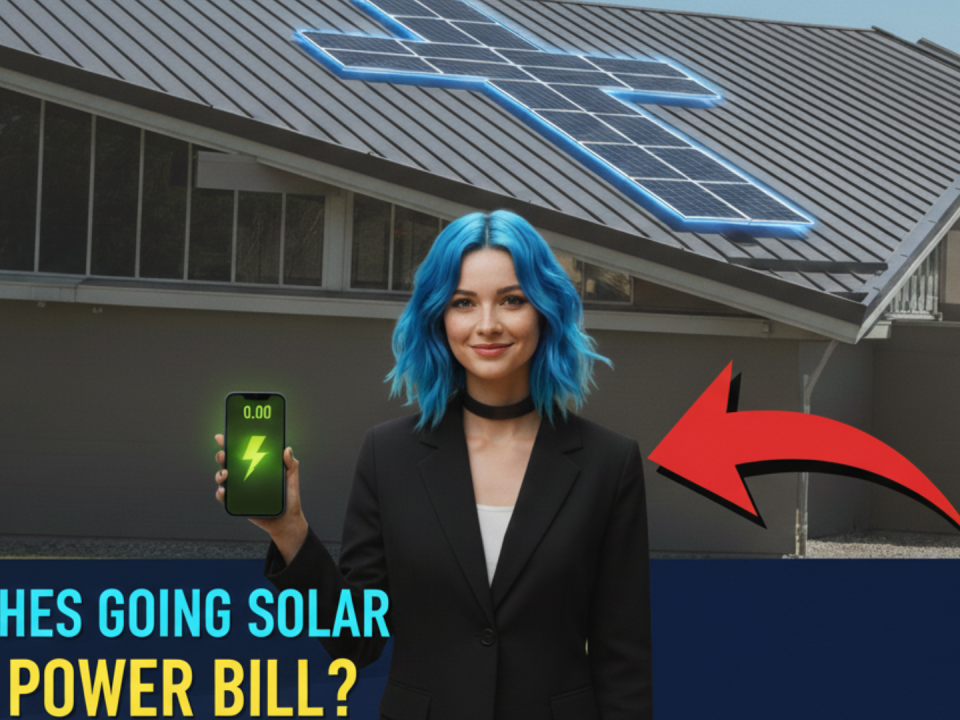
Questions to Ask Solar Companies Before Your Installation Goes Wrong
April 4, 2025
Best Solar Companies in Nova Scotia For Solar Panels
April 7, 2025I’ve seen a lot of changes, especially in how we think about energy. One of the big topics lately? How solar farms and good old Canadian farmland can share space. It sounds like a conflict waiting to happen, right? Energy needs versus food needs must be balanced in solar energy projects. But stick with me, because it’s not quite that simple, and the reality is pretty interesting. We’re talking about something called agrivoltaics, and it’s about making these two essential parts of our lives work together.
Understanding the Basics: Solar Farms and Farmland
What Exactly is a Solar Farm?
So, what are we talking about when we say solar farm? Think big. These aren’t just a few panels on a roof; they are large-scale solar installations designed specifically to generate a serious amount of electricity. They use solar photovoltaic (PV) technology – basically, lots of new solar panels that conserve water solar panels made of solar cells that turn sunlight directly into electric power. In Canada, we’re seeing more of these pop up as we push for cleaner energy. They can range from smaller setups to huge utility-scale solar projects covering thousands of acres.
Most big solar farms use ground-mounted solar systems, where panels sit on racks stuck in the ground. You might also see rooftop solar on barns or buildings, but for this discussion, we’re mainly looking at those larger, ground-mounted solar projects. Canada had about 6,452 megawatts of installed solar PV capacity by 2022. Big projects like the 465 MW Travers Solar Project in Alberta, covering roughly 3,300 acres, show the scale we’re dealing with. That’s a lot of land, which brings us to the next point.
Why Our Farmland is So Crucial
It’s easy to understand why farmland matters. It’s not just about growing food, although that’s obviously critical for our food security. Agriculture is a huge part of Canada’s economy and culture. We’ve got millions of hectares dedicated to farm operations – about 62.2 million hectares, representing 6.2% of Canada’s total land area. In 2021, the average Canadian farm was over 809.4 acres. This land is valuable, with the average price tag hitting nearly $4,951 per acre in 2023.
Beyond the economics, farmland plays a role in our environment, providing habitat for wildlife and supporting biodiversity. So, the idea of covering large parts of this agricultural land with solar panels naturally raises concerns. Is there enough space for both?
Can Solar Energy and Agriculture Really Work Together?
Yes, they can, and the key is agrivoltaics. This is the practice of using the same piece of land for both solar energy generation and agricultural activities. Think solar panels installed high enough off the ground for crops to grow underneath the solar panels, or for sheep or other livestock to graze.
It requires smart design of the solar installation. You need the right spacing between rows of solar panels (often 6-8 meters) and the right height (maybe 3-4 meters) to let enough sunlight through for growing crops and allow machinery access. It’s a balancing act. You might use adjustable panels or even semi-transparent ones. The goal isn’t just coexistence; it’s finding synergy.
Benefits of Combining Solar Farms with Farmland
So, why bother with the complexity of agrivoltaics? Well, the benefits stack up for farmers, the environment, and even our energy system.
How Does Dual-Use Land Benefit Farmers?
For farmers, this isn’t just about being green; it’s about the green in their wallets too.
- New Income Streams: Farmers can lease portions of their land for solar development, getting regular payments from solar developers. This adds a predictable income source, which is a big deal in the often-unpredictable world of agriculture. Some farmers generating their own solar power is essential for sustainable food farms might even sell excess power back to the power grid through net metering programs. Typical lease rates can vary, sometimes reported between $800-$1,200 per acre annually, though some sources mention even higher figures depending on the location and project.
- Reduced Costs: Remember the sheep I mentioned? Using livestock for grazing under solar panels (solar grazing) cuts down on mowing and herbicide costs. Less fuel, less labour, less chemical use – it adds up.
- Potential for Better Yields/Conditions: This is where it gets really interesting. The shade from solar panels can actually help certain crops. Think leafy greens or root vegetables. They get stressed by too much direct sun, just like us. Studies in Canada have shown yield increases of 15-25% for some crops grown under solar installations. Research at places like the University of Guelph found shade-lovers like lettuce could produce up to 50% more. For livestock, that shade means less heat stress, which is better for animal welfare and potentially productivity in solar parks.
Tip for Farmers Considering Agrivoltaics: Start small if possible. Look into pilot projects or connect with universities doing agrivoltaics research in your area. Understanding how specific crops or livestock perform under solar panels on your farm is key before committing large sections of farmland. Also, talk numbers early – get clear estimates on lease potential and the cost of solar installation versus long-term savings.
What Are the Environmental Advantages?
The environmental upsides are significant:
- Water Conservation: a key aspect of sustainable food farms Those panels that conserve water in farm fields do so by providing shade, which reduces evaporation from the soil. Some studies suggest water savings could be up to 30% or even 50% in certain setups. In areas facing drought, this is huge.
- Clean Energy Generation: This one’s obvious. Solar energy is renewable and clean solar energy project. Producing power right on the farm reduces reliance on fossil fuels and cuts greenhouse gas emissions. It helps Canada meet climate goals.
- Improved Soil Health & Biodiversity: Less intense sun and more moisture can be good for soil microbes. If solar grazing is used, manure provides natural fertilizer. Plus, planting native vegetation or pollinator-friendly plants around the solar arrays can boost local biodiversity.
Can Solar Farms Improve Agricultural Productivity?
As mentioned, for certain crops, yes. Shade-tolerant crops like spinach, kale, lettuce, potatoes, and even berries like Saskatoons have shown promise in Canadian agrivoltaic systems. Forage crops for livestock also tend to do well. It’s not a universal boost for all crops – sun-loving plants like corn might see reduced yields if the solar installation isn’t designed carefully. But the potential is there, especially when combined with the other benefits.
A Personal Note: I remember visiting a small test site a few years back. It was a hot July day, and you could feel the difference walking from the open field into the area under the solar panels. The air felt cooler, the ground looked less parched. The farmer was experimenting with kale and lettuce, and while he was still gathering data, he was optimistic. Seeing that practical application really drove home the potential for me – it wasn’t just theory anymore.
Challenges and Solutions in Coexistence
It’s not all sunshine and roses (or kale, in this case). There are real challenges to making solar and agriculture work smoothly together.
What Are the Main Concerns of Farmers?
Farmers have legitimate worries:
- Loss of Prime Farmland: The biggest concern is often taking high-quality agricultural land out of food production. Is energy production more important than food? This competition for land is why places like Ontario have rules against large-scale solar on prime agricultural tracts. Alberta requires an “agriculture first” approach, needing proof crops or livestock can coexist. Agrivoltaics directly addresses this by aiming for dual land use, not replacement.
- Equipment Access: Can you still get your tractor or combine between those rows of solar panels? Proper design of the solar layout with wide enough spacing (6-8 meters typically) and sufficient height clearance (3-4 meters for machinery) is crucial.
- Costs and Financial Viability: Agrivoltaic systems cost more upfront than standard ground-mounted solar due to the higher mounting structures and potentially more complex design. Farmers need to see a clear path to profitability, whether through lease payments, energy savings, or government incentives.
How Can Technology Aid in Overcoming These Challenges?
Technology is key here:
- Advanced Solar Panels & Trackers: More efficient solar cells, bifacial panels (capturing light from both sides), and even semi-transparent panels help maximize energy production while managing light for crops. Tracking systems that follow the sun can boost power output and be adjusted to optimize crop lighting.
- Smarter Mounting: Raised mounting structures are essential for providing clearance for machinery and livestock.
- Smart Farm Integration: Using sensors for soil moisture, temperature, and light levels under the panels, combined with data analytics, helps optimize both farming and power generation. Think precision agriculture meets renewable energy.
What Policy Measures Support Dual-Use Land?
Government support makes a big difference:
- Financial Incentives: Programs like Alberta’s On-Farm Solar Photovoltaics Program or the federal Canadian Agricultural Partnership (CAP) help cover installation costs. Check out resources like Solar-X or Solar Power Store for current incentives.
- Net Metering: Allows farmers to get credit for excess solar power generated on their food farms power sent to the grid.
- Supportive Zoning: Municipalities recognizing agrivoltaics as a valid agricultural use streamlines permitting.
- Learning from Others: Looking at policies in places like Japan or Europe, where agrivoltaics is more established, can offer good ideas for Canada.
Real-World Examples of Successful Coexistence
This isn’t just happening in labs. Agrivoltaics is working out there right now.
- Japan: They’ve been doing this since 2004, often growing high-value crops like ginseng under solar panels. Feed-in Tariffs (FITs) helped kickstart their solar market.
- United States: Solar grazing with sheep is becoming quite common across the U.S., managing vegetation on thousands of solar acres cost-effectively. Large solar projects in states like Texas are using sheep extensively.
- Europe: Community solar projects can benefit local food farms combining agriculture and solar power are popular, especially in Germany and France. Regulations often support this shared solar energy project land use.
- Canada: We’re getting there! The Grand Renewable Solar farm in Ontario uses sheep for grazing. There are pilot projects and agrivoltaics research happening, particularly in Alberta and Ontario, testing different crops and setups suitable for our climate. The Golden Leaf Agrivoltaics Project in Ontario plans to combine sheep farming with a 9.5 MW solar power facility.
Future Prospects for Solar and Agricultural Integration
The future looks promising for combining solar and farming.
What Innovations Are on the Horizon?
Expect even better solar panel technology – more efficiency, maybe panels tuned to specific light spectrums beneficial for plants. Smarter tracking systems and AI optimizing light and energy tradeoffs will become more common. Vertical solar installations (panels mounted vertically) might become more popular for certain applications, minimizing ground shading.
How Will Climate Change Impact This Coexistence?
Climate change actually makes agrivoltaics more relevant. The shade and water conservation benefits become critical during heatwaves and droughts, which are becoming more frequent in Canada. Agrivoltaics represents a way for farms to adapt, potentially allowing for longer growing seasons or different crop choices as conditions change. It builds resilience into both our food and energy systems.
What Role Will Community Involvement Play?
Absolutely critical. Getting local farmers and communities on board from the start is essential. Addressing concerns transparently, highlighting local benefits like jobs and investment, and using local feedback to shape solar project design leads to better outcomes for solar companies. It’s about partnership, not just plopping down largest solar facilities are often located near community solar projects.
Conclusion: Finding the Balance
So, can solar farms and farmland coexist? My take, after looking at the data and seeing early examples, is yes – with thoughtful planning and the right approach. Agrivoltaics offers a way to generate much-needed clean energy without sacrificing our vital agricultural land. It allows farmers to diversify income and potentially even boost productivity for certain crops while contributing to environmental goals like water conservation and lower emissions.
It’s not a magic bullet, and it requires careful design, technological innovation, supportive policies, and community buy-in. The solar industry and agriculture need to work hand-in-hand.
How Can Stakeholders Foster Coexistence?
To make this work on a larger scale in Canada:
- Share Knowledge: Farmers and solar developers need to connect, share experiences, and learn from existing agrivoltaic projects.
- Support Pilot Projects: We need more real-world testing across different Canadian regions and farm types. Check out funding opportunities for demonstration projects.
- Track the ROI: Clear data on the economics is crucial to build confidence.
- Navigate Regulations: Understand local rules and environmental factors.
- Consult Experts: Bring in people who understand both solar energy and agriculture.
- Flexible Agreements: Develop lease agreements that work for the long term for both parties. Consider resources from companies like OYA Renewables when exploring options.
Ultimately, integrating wind and solar design leads to better outcomes solar power and farming isn’t just about technology; it’s about finding smarter ways to use our land to meet multiple needs simultaneously. It’s a practical, forward-thinking approach, and something I believe we’ll see a lot more of as Canada continues its transition to renewable energy.
If you’re curious about exploring solar options for your farm or home, don’t hesitate to reach out. At SolarEnergies.ca, we’re all about providing that straightforward, honest guidance to help you make the right choice. Let’s make Canada go solar, smartly and sustainably.




